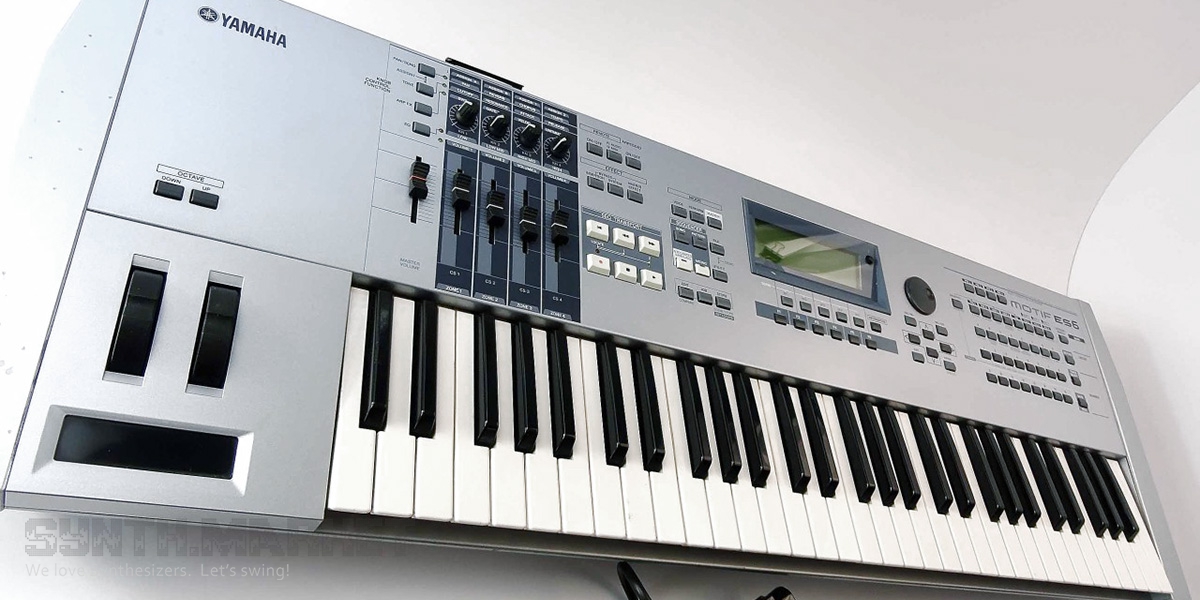MOTIF ES6 is a model of the Motif ES series which is represented with an AWM2 Tone Generator, 128 note polyphony, 226 000 note MIDI sequencer, audio input ports A/D, AIEB2, mLAN, Stereo IN, 175MB of sounds (when converted to 16-bit linear format), and 1859 waveforms.
The proprietory tone generator accepts Modular Synthesis Plug-in System/PLG boards owing to which physical modeling, virtual analogue synthesis, FM synthesis and additional sample sets can be complied. The sample-based subtractive synthesis engine is the core of the ES series. All the keyboard models offer a 16-track sequencer for MIDI and sample tracks. Sample memory allows up to 512MB of new sounds.
Comparing to the previous series ES included a larger polyphony, punchy envelopes, the effects engine based on DSP allowing for the use of independent dual insert effects on up to 8 tracks in a sequencer mode. The USB mass storage was added, RAM expansion supported and users got bigger storage amount. Acoustic piano sound was enhanced.
Megavoice technology which was featured in Tyros 2 made ES sounds naturally expressive adding velocity switching, hammer-ons, slides, fret noise and ghost notes to them.
Motif ES6 released in 2003 has a 61-note keyboard with FS key action, features 128 voices of polyphony, 175MB ROM waveforms and the total number of 1859 waves. Memory offers 768 presets + 64 kits, 384 user ones + 32 kits, 128 performances, and 128 multis.
Tags: digital synthesizer



















